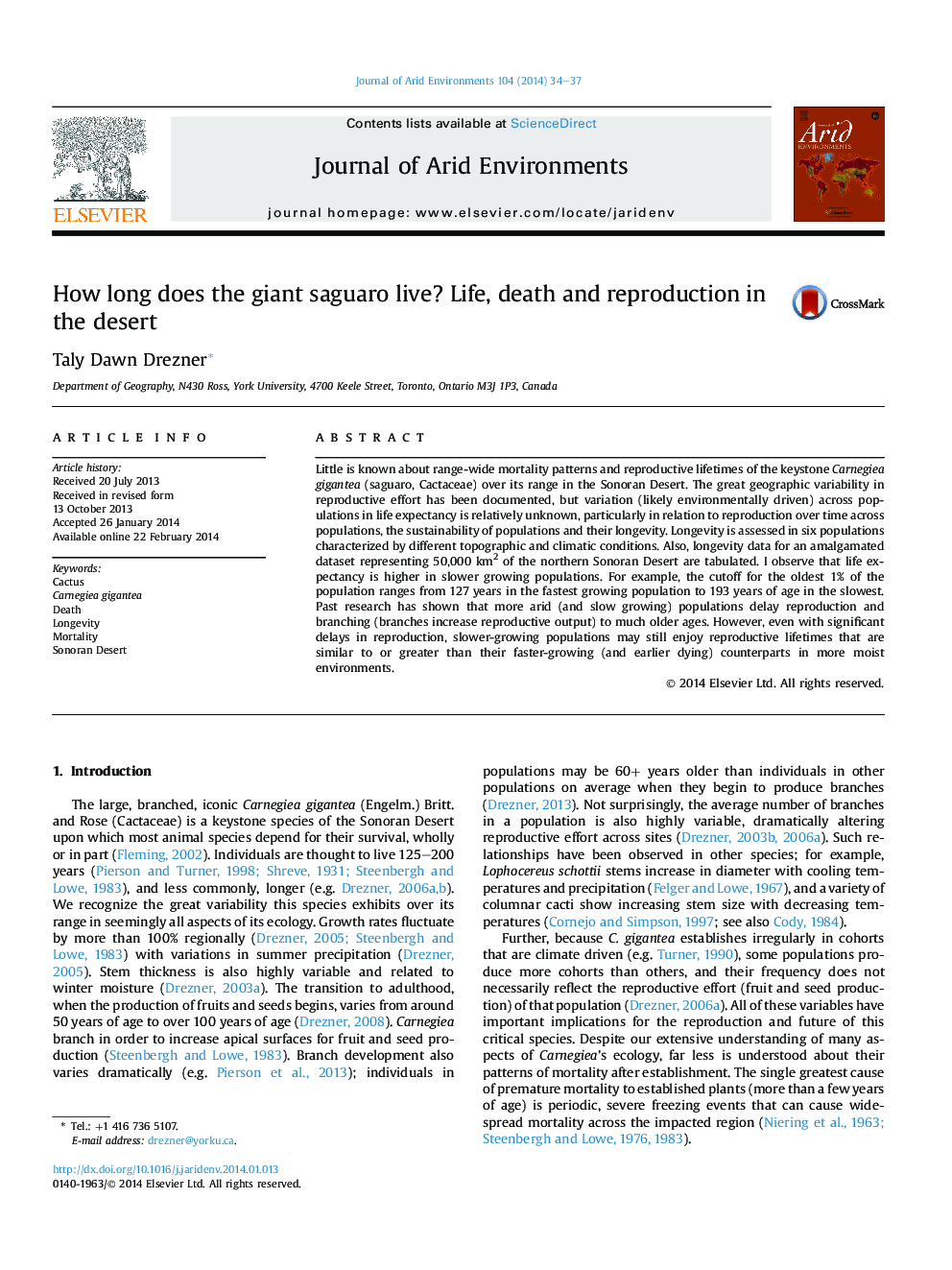| Article ID | Journal | Published Year | Pages | File Type |
|---|---|---|---|---|
| 4393005 | Journal of Arid Environments | 2014 | 4 Pages |
•The life expectancy of this keystone species varies dramatically across populations.•Height is a poor predictor of mortality.•Populations are longer lived in the more arid, extreme locale.•Slow growth may contribute to long-term survival of this cactus in more marginal locations.•Reproductive delays are offset by greater longevity in more arid locales resulting in similar numbers of reproductive years.
Little is known about range-wide mortality patterns and reproductive lifetimes of the keystone Carnegiea gigantea (saguaro, Cactaceae) over its range in the Sonoran Desert. The great geographic variability in reproductive effort has been documented, but variation (likely environmentally driven) across populations in life expectancy is relatively unknown, particularly in relation to reproduction over time across populations, the sustainability of populations and their longevity. Longevity is assessed in six populations characterized by different topographic and climatic conditions. Also, longevity data for an amalgamated dataset representing 50,000 km2 of the northern Sonoran Desert are tabulated. I observe that life expectancy is higher in slower growing populations. For example, the cutoff for the oldest 1% of the population ranges from 127 years in the fastest growing population to 193 years of age in the slowest. Past research has shown that more arid (and slow growing) populations delay reproduction and branching (branches increase reproductive output) to much older ages. However, even with significant delays in reproduction, slower-growing populations may still enjoy reproductive lifetimes that are similar to or greater than their faster-growing (and earlier dying) counterparts in more moist environments.
